
Blog
-

Carrying Our Weight: Shared Wisdom for Backpacking & Energy Efficiency
by Sam Randall
Right around the time I made the exciting professional move from grad school to begin my fellowship with E4TheFuture, I was simultaneously embarking on a personal journey to break into the next level of outdoor exploration and learn how to become an overnight backpacker.
-
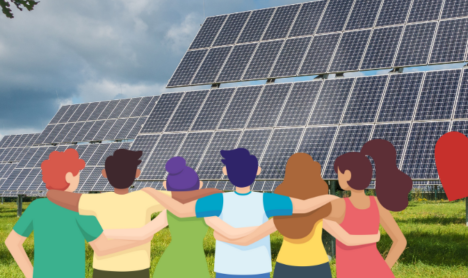
The Human Element: Bringing Trauma Informed Practices to Clean Energy Policy
by Sam Randall
While attending this year’s National Home Performance Conference (NHPC ’24), I was fortunate to have the opportunity to attend a fascinating breakout session that focused on a topic near and dear to me – trauma informed practices.
Facilitated by Habitat for Humanity staff, “Person-Centered, Trauma Informed Home Repair Programming and Approaches” was a highlight of my NPHC ’24 experience.
-

Youth Apprenticeship Week: Energy Efficiency Workforce Development
by Aileen Villa
Recently, I had the wonderful opportunity to attend the 2024 Home Performance Conference (HPC) for the second time since entering the energy efficiency industry. This year, I engaged with several sessions in HPC ‘24’s Workforce Development Track. I gained insight from sessions thoughtfully titled “Registered Apprenticeships: Building Career Pathways in Energy Efficiency” and “Youth in Home Performance: What it Takes to Attract and Retain Young People,” among others.
Listening to the folks navigating apprenticeship and training programs in energy was very rewarding. I’m happy to share a bit about some organizations spearheading this important work.
-

Empowering Change: Advocating for Diversity in the Energy Efficiency Industry
by Sam Randall
This year’s National Women’s History Month theme celebrates “Women Who Advocate for Equity, Diversity and Inclusion.” As the National Women’s History Alliance explains, this theme discusses how “for a positive future, we need to eliminate bias and discrimination entirely from our lives and institutions.”
This plea resonates with me. Below, I offer thoughts on the intersection of gender and the energy efficiency field, concluding with a call to action to recognize those who advocate for Equity, Diversity, and Inclusion in your network!
-
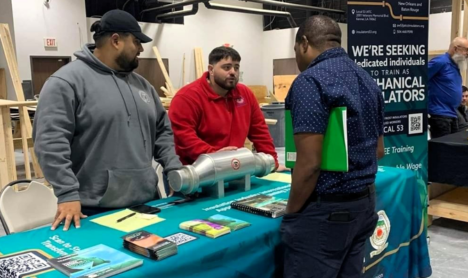
Workforce Advancements in Energy Efficiency: Heat and Frost Union Apprenticeships
by Aileen Villa
Concentrated efforts in transitioning to clean energy from fossil-fuel-based systems are increasing rapidly. As we make this transition and work toward more advancements in clean energy, building up the energy efficiency workforce is a top priority.
As a newcomer to the energy efficiency industry (coming up on my one-year anniversary of entering the field soon!) with a background in labor justice, I was very drawn to workforce development initiatives across the sector.
-
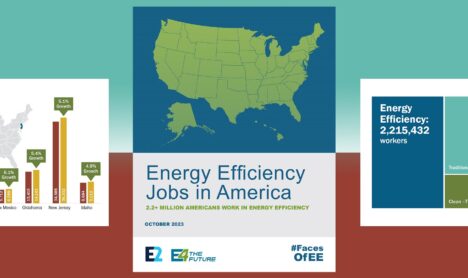
The U.S. Energy Efficiency Workforce: Deep-Dive Annual Insights
by Pat Stanton
I’m proud of my team’s work on our seventh annual energy efficiency (EE) jobs report. Energy Efficiency Jobs in America in 2023 shows 2.2+ million efficiency workers, a number expected to grow annually with new workforce development and training happening across the country. This report focuses on the specially trained builders, electricians and other skilled professionals who focus on making our buildings, appliances, factories and infrastructure run on less energy.
Providing access to consistently-presented EE workforce statistics at regular intervals during this crucial time serves as a key baseline for comparison, as public and private sector infrastructure investments continue to rise.
-

#EEDay2023: Energy Efficiency Everywhere All at Once
by Aileen Villa
Each year on the first Wednesday in October, Energy Efficiency Day is widely celebrated. October 4 is your chance to join the campaign not only to proclaim the immense benefits of energy efficiency, but also to highlight all the work being done to advance EE.
You are invited!
-

Unparalleled Opportunities Arise for Energy Efficiency Job Growth: Report
by Pat Stanton
Energy efficiency (EE) initiatives are needing increased attention with new federal funds. This translates into more jobs on the way. Energy Efficiency Jobs in America shows there are nearly 2.2 million efficiency workers, and the number will rise as infrastructure investments kick in this year. Making these workforce statistics available now is important, so that we have a baseline for comparison.
-
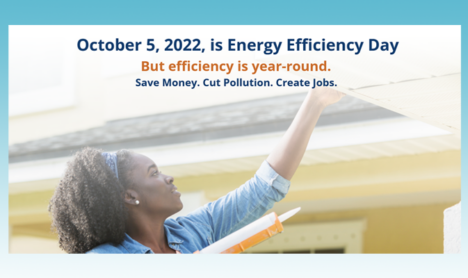
#EEDay2022: Big Advantages, No Regrets
by Carol Harley
October 5 is your chance to be in this year’s big campaign that proclaims energy efficiency’s powerful and lasting benefits. Why raise your voice? Lots of reasons! It’s fun to join the unstoppable force of efficiency (EE) and be among its fans and advocates. It’s free. And it’s meaningful. Join us to celebrate positive news and help advance EE as a powerful force for good.
-

Career Spotlights in Energy Efficiency: Jessica Azarelo
by Carina Wallack
“I help clients save money, short and long term, make homes more comfortable, healthier, and happier!” says the founder of Attic Queen, LLC.
Jessica Azarelo is among the more than two million Americans with rewarding careers in the energy efficiency sector.
Read More -

Career Spotlights in Energy Efficiency: Jason Denese
by Carina Wallack
“I wanted a job that was exciting and fulfilling,” says Jason Denese of Abode Energy Management. “I was looking for opportunities to grow and learn, and the energy efficiency field provided this.”
Jason took the leap into energy efficiency after a previous career in the casino industry. Read More
-

It’s Now or NEVI
by Susan Buchan
Are states, cities and towns prepared for the new electric vehicle infrastructure funding?
When Congress passed the Bipartisan Infrastructure Bill in November of 2021, it made history for including the largest-ever federal investment in transportation electrification. One section of the law, the National Electric Vehicle Infrastructure (NEVI) Formula Program, will provide $1B each year from 2022-2026 “to provide funding to States to strategically deploy electric vehicle (EV) charging infrastructure and to establish an interconnected network to facilitate data collection, access, and reliability.” Read More
-
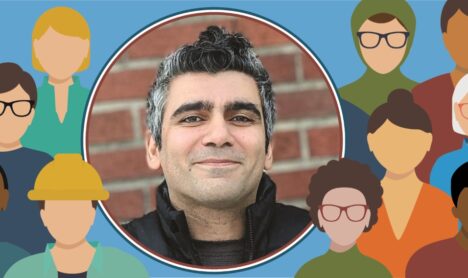
Career Spotlights in Energy Efficiency: Yashar Ebady
by Carina Wallack
“We are talking about the future, our kids and grandkids. Energy will always be relevant,” says energy efficiency professional Yashar Ebady. “It is imperative that we collaborate on all levels around the topic of energy.” Read More
-

Weatherization Without Walkaways: Change is Coming, But Needs a Push
by Steve Cowell
Weatherization is in the news more than ever, with infrastructure funds coming and with state and federal legislation proposed to improve buildings.
Funding is necessary, but not sufficient, to solve our nation’s crisis in substandard housing. We absolutely need smart strategy. If we do not apply funds quickly and effectively, this opportunity could turn into its own crisis. This is what keeps me up at night.
-

Women Leaders Aim for a More Representative Energy Efficiency Industry
by Carina Wallack
“As a Latina-mom, an entrepreneur, an employer, and a community member, I am always looking to expand access for people like myself,” says Leticia Colon de Mejias, who started Energy Efficiencies Solutions in Connecticut. She’s right. Greater access to the energy efficiency industry is needed.
For Women’s History Month, I want to highlight women driving progress in the energy efficiency industry. I was lucky to connect with generous leaders in the Northeast U.S. who are making enormous contributions. Read More
-

With Building Efficiency Retrofits, You Really Can Have It All
by Carina Wallack and Pat Stanton
Care about economic and environmental well-being? If so, you realize that our most valuable assets are sectors that create jobs quickly while cost-effectively reducing emissions for the long haul. Building energy efficiency investments accomplish this and more.
Read More -

Charging Forward: How to Scale EV Infrastructure in Massachusetts and Beyond
by Rachel Fishman
The age of the electric vehicles has arrived and it’s here to stay. In a recent poll, 56% of Massachusetts respondents say they are likely to purchase an EV in the next five years. The Infrastructure Investment and Jobs Act will supply $7.5 billion to build a nationwide network of charging stations. Read More
-
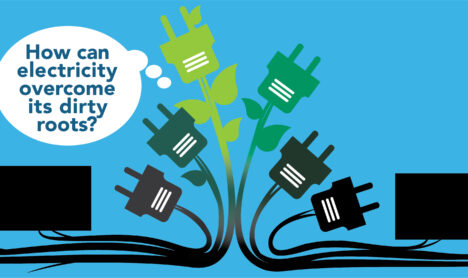
Efficiency: Minimizing Total Costs of a Precious Resource
by Pat Stanton
Fighting climate change hinges on transitioning consumption to what will become our most precious energy resource: zero-carbon electricity.
Read More -
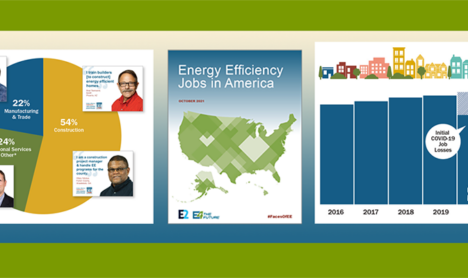
Energy Efficiency Jobs in America 2021: The Power to Tackle Our Thorniest Issues
by Steve Cowell
Energy Efficiency Jobs in America explores the workforce that comprises the largest part of U.S. energy sector employment. It also shows how energy efficiency has the breadth and depth to tackle our thorniest issues. Efficiency holds the promise of solutions for climate, equity, and economy.
Energy efficiency businesses across the country were gutted by the pandemic. They continue to be impacted by economic and workforce challenges. Yet day after day, efficiency workers — who are unsung heroes — rise to give their best effort. Read More
-

Insulation: Maximizing Value of a Precious Resource
by Pat Stanton
How do you keep drinks cool when you’re out far from home? Bags – or blocks – of ice (duh)!
Consider ice, a precious energy resource in the great outdoors. Your choice of a container dramatically impacts your results: To keep cool all day will require much more ice (your precious resource) if you choose an open metal bucket, compared to a well-insulated cooler.
Getting to Zero
When you want to decarbonize the building sector, your precious energy resource is zero-carbon electricity (including its generation, transmission and distribution). Poorly insulated buildings waste energy resources, like an open metal bucket wastes precious ice on a hot day.
Read More -

Non-Energy Benefits of Distributed Energy Resources
What I learned during my internship at E4TheFuture
by Owen Connolly
Prior to my summer internship, I had some knowledge of the clean energy industry, but knew nothing about distributed energy resources (DERs) and the benefits they can provide. The valuation team of Julie Michals and Shayna Fidler quickly brought me up to speed on the National Standard Practice Manual for the Benefit-Cost Analysis of Distributed Energy Resources (NSPM for DERs), as well as the Database of Screening Practices (DSP). While the DSP provides details on state cost-effectiveness practices for energy efficiency, my task was to research where and how states are valuing other DERs – with a focus on non-energy benefits (NEBs).
-
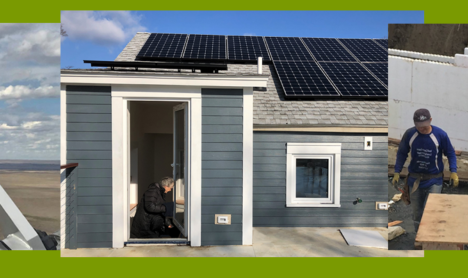
How Can We Better Account for Economic Development in Benefit-Cost Analysis?
by Shayna Fidler, Julie Michals, and Devin Hubbard
Recent news headlines are dominated by stories of growing investments in distributed energy resources (DERs). “Utility to Jump Start EV Charging Infrastructure,” “Flexible DERs to Replace Natural Gas Peakers,” and “Doubling Down on Energy Efficiency to Fight Climate Change” are becoming common topics. As the shift to a cleaner, more flexible electric grid expands in the US, the connection between investing in DERs and the associated economic development impacts is critical to building a competitive and sustainable clean energy industry.
-

Energy Independence in a New Light: Economy Grows, Yet Uses Less Energy
by Pat Stanton
Throughout the 19th and 20th centuries, conventional wisdom equated economic growth with a rise in energy use, across the board. An examination of trends over the past three decades, proves that the correlation is no longer valid.
A Synapse Energy Economics analysis of data from the Energy Information Agency (EIA) recently commissioned by E4TheFuture compares per capita economic growth, energy use and CO2 emissions nationally, and for each state and the District of Columbia.
Read More -

State-Level Policy Choices Matter (a lot!) for Climate
by Steve Cowell
At this moment federal leadership changes are center stage, and may likely bode well for U.S. action on climate. Yet I want to focus beyond national news, calling your attention to a simple fact: States and cities need to remain at the forefront of implementing climate solutions.
Think of it as a “both/and” approach: Policy choices and implementation decisions by state officials as well as city leaders will help to move us forward, and can complement and execute positive federal legislation while administering programs. For meaningful U.S. progress on climate change, cooperation by and within states must be prioritized. Read More
-
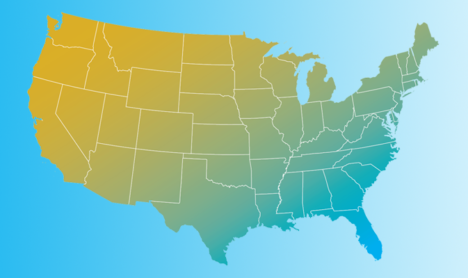
Rebuilding the Energy Efficiency Workforce
by Steve Cowell
“A year like no other.” Say it anywhere, and you see nods of agreement. In moments of solidarity you can muster a rueful half-smile. We all know that the impacts of 2020 on people’s lives are profound. What about energy efficiency professionals specifically? This community of workers is very much on my mind.
Read More -

#EEDay2020: More Vital Than Ever
by Carol Harley
Looking for an opportunity to raise your voice for positive change? It’s coming soon! Everyone can get on board with “Save Money. Cut Pollution. Create Jobs.” Please help us spread the word!October 7 marks a 5-year milestone of the big annual campaign E4TheFuture helped to establish, proclaiming energy efficiency’s powerful benefits. Everybody knows saving energy saves money. This year’s campaign can inspire a very broad audience: Everyone who lives in a home, goes to school, and/or works in a building.
Act Now. It’s free to Join!
Visit Energy Efficiency Day and join your voice to hundreds helping to promote the massive benefits of EE. Please shout out loud about EE’s power to effect positive change. Read More -

Carsharing: The New Challenges and Opportunities Presented by COVID-19
by Rachel Ehrman
The COVID-19 pandemic has shaken the world. It’s affected everyone, every business, every industry. While this time is one that is surely testing us all (hundreds of thousands of clean energy jobs vanished in a few short weeks), it is also a time to pause, reflect, and reshape our work to come out of this difficult time more resilient than before. This is especially true of industries that rely on shared use when many people seek every precaution possible to avoid the virus. Despite its environmental and financial benefits, carsharing is struggling. Read More
-
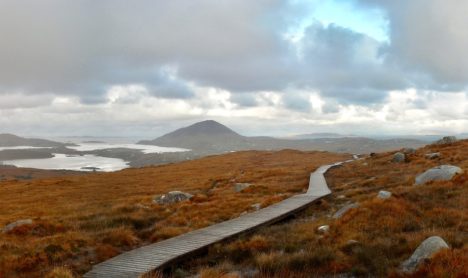
Faces of EE to COVID: “You might break our stride, but you can’t break our spirit.”
by Pat Stanton
“We will put our best foot forward.”
When I listen to energy efficiency professionals, among their many struggles today I hear determination and grit. People are figuring out what to do next, how to retool and help each other. Online training is a big part of what can happen right now. And new ways of minimal- or no-contact building retrofits are taking shape.
A multitude of voices are asserting we must “build back better” — focus resources and efforts on a clean economy, a healthy and equitable future. Despite the gut-punch reality of job losses revealed last week, EE pros are stepping up to find a possible path forward. Read More
-
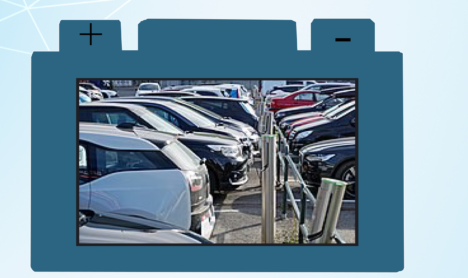
Optimized Charging for EVs (Part 2): Who GIVs a V2G?
by Susan Buchan
Electric vehicles and hydrogen-fueled vehicles continue gaining market share. Why should you care? With these increases, the opportunities and challenges of transportation electrification are real – and coming soon to a driveway near you! EVs are now expected to reach parity with internal combustion engine vehicles in 2022, due to steady declines in battery costs.
-

Emissions Optimized Charging for EVs (Part 1): Should “What” Matter More Than “When”?
by Susan Buchan
Are we on the verge of an EV “tipping point” similar to other technological advances that found rapid acceptance and integration into the marketplace? Projections show the rise of electric vehicle adoption in the US is positioned to continue and increase. Historical data show refrigerators, clothes dryers, color TV, personal computers, and smartphones all rose from early-adopter status to widespread diffusion and ownership in about ten years.* Read More
-

TRCs and Sugar Cookies – a Holiday Review of Cost-effectiveness Testing Practices
by Alaina Boyle
As a home baker, I look forward to the holidays for the opportunity to dust off my cookie recipes — and to enjoy quality time with family and friends. Every December I comb through my recipe box to select the year’s favorites. To find the perfect mix of cookies to share with my family and friends, I like to refine the ingredients and directions in old standards while testing new recipes. Recently – bear with me on this – I’ve noticed that the Database of State Efficiency Screening Practices (DSESP) is a lot like my recipe box. Read More
-

Smarter Energy Savings: Technology’s Expert Voices
by Carina Wallack
with Jessica Granderson, Greg Marsicek, Jamie Peters, and Kevin DeMasterDo you think about renewables as the most innovative set of technologies for reducing emissions and meeting customer needs? If so, I want to challenge that perception: Energy efficiency should get more credit, and we’ve got the expert voices to prove it!
New efficient technologies provide less expensive — and more effective — solutions than you may realize. Efficiency reduces energy bills and improves air quality and comfort, while also enabling the success of renewable resources. To meet our nation’s climate goals, efficiency alone can contribute 50 percent of necessary emissions reductions by 2050, according to ACEEE. Read More
-

Veterans Show Leadership in Energy Efficiency Employment
by Pat Stanton
“If you can low crawl through cold wet mud under concertina wire while live fire shells whiz above your head,” says Rhett Major, “working in a crawlspace or attic is pretty much a piece of cake.” A veteran of the U.S. Army Reserve and National Guard, Rhett now thrives in his energy efficiency career. He is one of more than 230,000 vets who have chosen similar paths. Read More
-

Three Reasons the Secret’s Out about EE Jobs
by Steve Cowell
Only a few of us knew the secret at first. You’ve heard it by now though, as more and more people catch the knowledge: Energy efficiency is a solution that grows jobs and builds careers as it contributes to local economies. By local, I refer to essentially every county across the United States. Energy efficiency now supports an American workforce of more than 2.3 million people, and continues rising.
I am excited to share great news with you: Our 2019 Energy Efficiency Jobs in America is now available. It offers granular details you will find useful and valuable if you care about helping to advance clean energy, as I do. Read More
-

Reducing Emissions One City at a Time
by Andrew Chase
Across the United States, local and state governments have committed to reducing carbon emissions and increasing renewable generation. One significant source of emissions is our built environment — residential, commercial and industrial buildings. New York, our nation’s largest city, recently recognized that buildings comprise 70% of its total emissions. The city recently passed the Climate Mobilization Act requiring large buildings to reduce emissions by 40% by 2030–and 80% by 2050. Read More
-
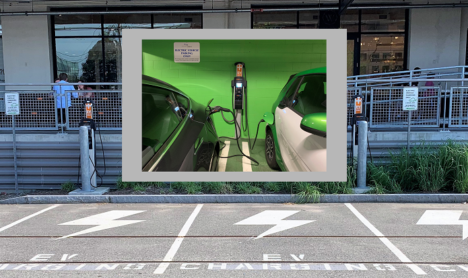
EVs Can Lead the Charge for Responsible Batteries
by Rachel Ehrman
When I walk in my neighborhood, I’m starting to notice electric vehicles (EVs) parked on the street and driving through town. When I turn on the television, car companies are starting to run ads for their EV models. It’s clear EVs are on the rise, and there’s no sign that their growth is slowing down anytime soon. Read More
-
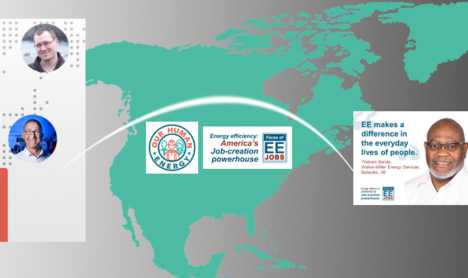
Momentum Builds for Energy Efficiency
Workforce Unites to Accelerate Positive Change
by Pat StantonIf “energy efficiency” conjures light bulb rebate programs in your mind, you may be surprised to discover the strength of the energy efficiency industry — and how it continues building. Professionals who provide efficiency services and products are EE pros now gaining a voice and an identity. Read More
-

Building Consensus to Achieve New York’s Ambitious Energy and Carbon Goals
by Steve Cowell
New York is stepping up as a national leader on energy and carbon reduction. And details matter. How will New York achieve its goals? How are stakeholders and advocates helping to provide direction? Read More
-

Orchestrating a Better Outcome
New Playbook Offers Guidance on “Energy-Plus-Health” Programs
by Julie Michals and Ellen Tohn
Twentieth-century music giant Sergei Prokofiev wrote the timeless Peter and the Wolf to help teach about the orchestra. We thought it fitting to use Prokofiev’s approach to tell a story. But in place of Peter (his grandfather, the bird, cat, duck, wolf and hunter – all represented by types of instruments) our focus is the potential for energy efficiency and health care industries to play “music” together. (Perhaps a stretch, but stay with us . . .) Read More
-
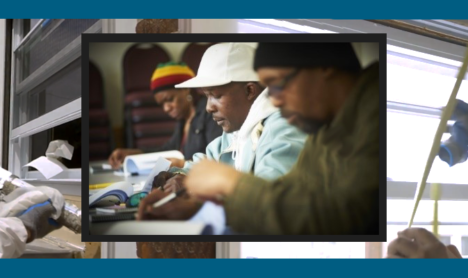
Career Pathways to Energy Efficiency Jobs: Apprenticeships
by Carina Wallack
“The time to join a fast growing, rewarding career has never been better,” says HVAC professional Chris Morin. “Every home needs these professional skills, most of which do not require a higher education and mountains of debt to attain… [The energy efficiency industry] is a great choice for those interested in a career move to a skill that cannot be outsourced by robotics.”
For those seeking stable jobs with opportunities for social and environmental impact, apprenticeships in the energy efficiency (EE) field are a good option. Energy efficiency professionals are everywhere, with varied roles. Read More
-

Sowing the Seeds of Change
REEOs report on NSPM developments in their region
by guest authors Cyrus Bhedwar, Greg Ehrendreich, Samantha Caputo, and Elizabeth Titus
Two years ago, the National Standard Practice Manual (NSPM) debuted and began to bloom. With spring upon us once again, we asked several of the regional energy efficiency organizations (REEOs) for their key insights thus far on interest, use, and application of the NSPM in their respective regions. Representatives from three REEOs share their perspectives below and discuss progress on states’ efforts to review cost-effectiveness testing practices using the NSPM framework.
Read More -
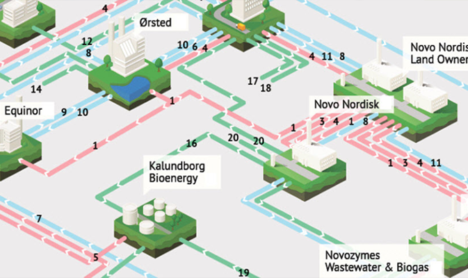
Industrial Symbiosis: Taking Resource Efficiency to the Next Level
by Susan Buchan
You may remember the term symbiosis from eighth grade biology. It’s the concept of organisms sharing materials, energy, even their bodies – with other organisms for the benefit of both species. The idea of applying symbiosis to industrial producers was pioneered in Denmark almost 50 years ago in 1972, and came to fruition in 2015 with the establishment of the Kalundborg Symbiosis Industrial Park.
-
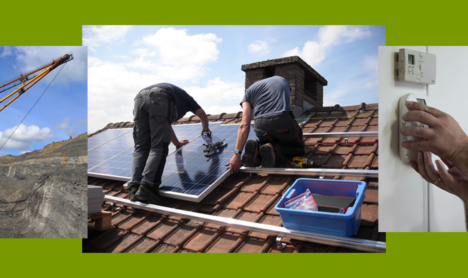
Clean Energy Jobs Begin Heating Up Coal Country
by Pat Stanton
“I will always be a coal miner at heart,” Scott Shoupe says, “but we have to acknowledge where it is and the true impacts of coal for the future. I want to take my wealth of knowledge and bring change to my communities.”
Read More -

Spotlight on Women in Energy Efficiency
by Audrey Bragg
“I think it’s just my personality that allows me to be fearless and put myself in gender-unbalanced situations,” says Stephanie Bassler. “I am doing my best, and I let that speak for itself.” How many of us have heard women’s stories similar to Stephanie’s?
To celebrate Women’s History Month, my staff asked women to reflect on their career roles in energy efficiency (EE). Read More
-
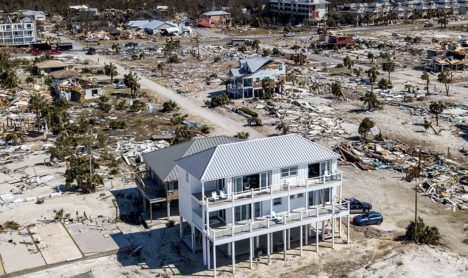
Energy Efficiency: A Critical Component to Preparedness for Extreme Weather
by Pat Stanton
Record-breaking Hurricane Michael devastated coastal communities last fall. Because severe weather events on Florida’s Panhandle occur less frequently than on its Atlantic coast, that region was unprepared for such a potent storm. Panhandle building codes were less stringent than elsewhere,* and residents paid a steep price.
A famous picture from The New York Times shows one house unscathed in Mexico Beach, amidst flattened home sites. Why did this building withstand the storm? The owner worked with experts to design it for extreme weather events, using insulated concrete forms rather than taking a typical “design-to-code” approach. Learning this fact led me to consider the range of benefits that resilient buildings provide to their owners and occupants. Read More
-

Gliding into the New Year. . .
New Case Studies & Resources Help States to Apply the NSPM
by Julie Michals
Finding the “sweet spot” in skate skiing requires maximizing the efficiency of your glide. This requires balance – shifting your weight from one foot to the other to stay on top of your skis – as well as engaging your core, lifting your poles high, and keeping your head up so you can see what the trail brings ahead. Along with building endurance, mastering the glide makes it easier to ski up the mountain at a smooth pace, with the reward of a fast and fun descent awaiting on the other side. It takes time and patience to learn proper skate skiing technique, which I continue to work on despite years of practice. Read More
-

Key Questions Researched as Electricity Distribution Models and Practices Evolve
by Steve Cowell
Repeatedly, we hear about how fast the electric grid is transforming, and about how many difficult issues utilities, regulators, project developers, and other industry players must grapple with daily. Whether you engage with these issues every hour of the day or only tangentially, you know it’s necessary to keep up with what’s happening. I am pleased to announce new essential resources on non-wires alternatives (NWAs) and multi-user microgrids (MUMs). These two papers bring insight to current grid edge topics, and show how location is critically important to planning. Read More
-

Local Staying Power: EE Jobs in Rural America
by Audrey Bragg
Energy Efficiency Jobs in America shows that energy efficiency (EE) jobs drive energy employment, representing nearly 35% of all U.S. energy-sector workers. One may assume that most of these opportunities are in major cities, as rural areas offer fewer job options in general. However, certain industries create a larger number of local jobs providing employment for Americans outside metro areas. These jobs can transform people’s lives and be fulfilling careers.
EE is one of these vital industries, offering 2.25 million jobs.[i] You may not realize, but EE jobs are everywhere. In fact, 99.7% of U.S. counties have energy efficiency jobs. Yes, 3,000 out of 3,007 counties employ EE workers. Read More
-
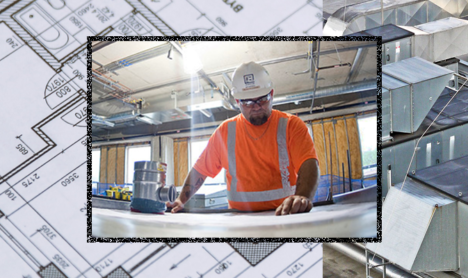
Construction Jobs Significant in U.S. Energy Efficiency Employment
by Pat Stanton
Since early September, I have been eager to share findings from our recently released Energy Efficiency Jobs in America report. One key fact that surfaced is the importance of construction work in the energy efficiency (EE) industry. Overall, 2.25 million Americans are employed in EE. Of these workers, 1.27 million are employed in construction.*
Did you know that 1 in 6 of all United States construction workers spend 50% or more of their time on EE-related tasks? People may think that careers in efficiency are limited to changing light bulbs and installing insulation. But we’ve discovered that most EE construction work is related to installing high efficiency heating and cooling / HVAC systems. Read More
-

Veterans Rock Energy Efficiency Jobs
by Pat Stanton
Every workday, 2.25 million American energy efficiency professionals are on the job.[i] Many install insulation and advanced building controls and improve HVAC systems. Their work isn’t always recognized, but I strongly believe that it should be! For starters, energy efficiency (EE) cuts waste and costs while improving health and comfort.
NOTE: See the current version of Energy Efficiency Jobs in America for updated statistics.
Our new report, Energy Efficiency Jobs in America, offers insights about EE companies and workers. I was surprised to learn that although only six percent of the U.S. workforce are veterans, eleven percent of energy efficiency workers are veterans. Read More
-
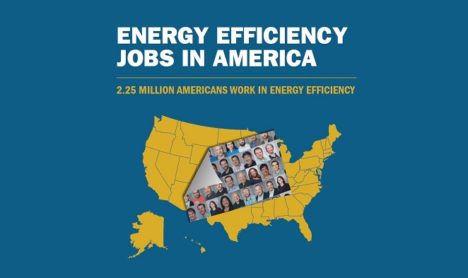
Energy Efficiency Jobs: USA’s Powerhouse
by Steve Cowell
News flash! The U.S. energy efficiency industry is becoming known as a jobs powerhouse. Why? Because it now supports a workforce of 2.25 million and continues to increase. I feel honored to spread this good news that buoys us beyond politics to unite a focus on the positive.
Our new report, Energy Efficiency Jobs in America, articulates the scale and scope of jobs across the country, with details for all 50 states. Energy efficiency (EE) is the largest sector in the U.S. clean energy economy. Read More
-
Guest Blog: Saving money and changing lives through energy efficient solutions
 Derrick Blue is Interim CEO at Tampa Hillsborough Action Plan.
Derrick Blue is Interim CEO at Tampa Hillsborough Action Plan.A major report shows that there are now more than 119,000 energy jobs in Florida. The vast majority of these—more than 112,000—are energy efficiency jobs. But what are those jobs?
You might be surprised to learn that energy efficiency employs plumbers, carpenters and other skilled workers in the building trades. I should know—I employ and contract with dozens of them.
Read More -
Guest Blog: Energy efficient homes save money, build careers, contribute to economy
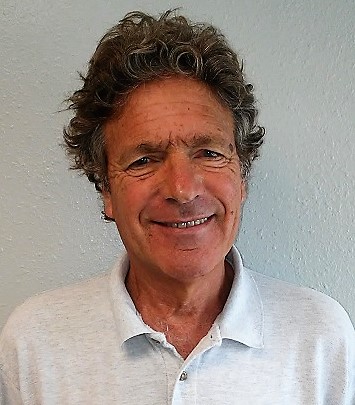 Dennis Brachfeld is the owner of AboutSavingHeat.Com.
Dennis Brachfeld is the owner of AboutSavingHeat.Com.Like millions of Coloradans, my love for the great outdoors and winter sports brought me to the Mile-High City. But it was skyrocketing energy costs during the 1970s oil crisis that inspired me to make a career out of reducing energy waste, while helping our environment.
Today, energy efficiency is paving the way to a prosperous future by creating new, stable, good paying jobs, helping millions save money, and decreasing our energy waste. In 2018 a nationwide report shows there are more than 32,000 energy efficiency jobs here in Colorado alone—a seven percent increase from a year ago. Careers in the energy efficiency industry are wide ranging, including electricians, carpenters, plumbers and construction workers. Read More
-
Guest Blog: Why waste energy you don’t have to?
 William A. Lippy is President and CEO of Fi-Foil Company.
William A. Lippy is President and CEO of Fi-Foil Company.Florida has made significant economic gains since the great recession wreaked havoc across America a decade ago. One area where the Sunshine State has experienced tremendous growth is in the clean energy industry, which includes renewable power and energy efficiency. Today, the energy efficiency industry is paving the way for good-paying, stable jobs while at the same time reducing energy costs and dependence on fossil fuels.
Read More -

Staying Cool with the NSPM: States Wade into Deeper Waters
by Julie Michals
It’s been over a year since NESP published the groundbreaking National Standard Practice Manual (NSPM). After months of ongoing state outreach to build understanding of the NSPM, stakeholder interest is intensifying. Some jurisdictions are “dipping their toes in,” while others are venturing from shallow to deeper waters. New developments in NSPM awareness and application show states taking the NSPM from theory to practice around the country. Read More
-

How to Return NY to “Top Three” for Energy Efficiency
by Steve Cowell
New York was once among the top three states–and can be again. Gov. Cuomo has called for ambitious new energy efficiency targets, and New Yorkers are urging the governor to present a statewide EE goal later this month that will help restore New York’s once-held status as a national leader.
Read More -
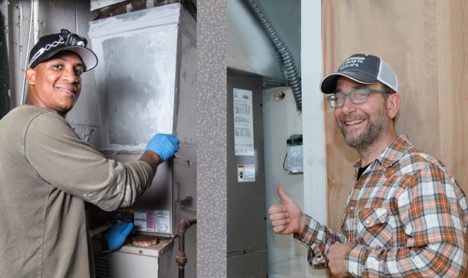
Defend Vital Energy Efficiency Funding
by Steve Cowell
The White House budget proposed devastating cuts to key U.S. energy efficiency programs. Eighty percent of FY19 program dollars could be in real danger. Although a FY’18 omnibus bill succeeded in funding the remainder of this year,* the fight for FY’19 is just beginning. If you believe, as I do, that energy efficiency brings lasting benefits to all Americans please make your voice heard now.
Read More -
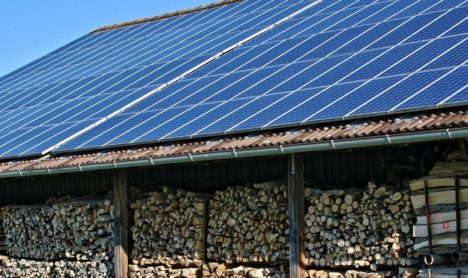
Barn Roof Community Solar – An Untapped Massachusetts Resource
by Rachel Ehrman
A palpable sense of pride emanates from people who live in rural towns. Untouched nature and thriving family farms are cherished rarities in Massachusetts. Protecting the integrity of such communities, while ensuring their constituents have access to local, renewable energy, is a delicate – yet important – challenge that E4TheFuture is ready to tackle.
-

Taking Stock: NSPM Makes Quiet Inroads
by Julie Michals
The year 2017 will likely be remembered as an exciting one for our U.S. electricity industry. Developing technological advances, innovations, and emerging opportunities — largely in the distributed energy area – plus tackling regulatory barriers and testing new policies, programs, rate designs, are among the year’s headlines. Add the federal energy regulatory/political frenzy (aka FERC NOPR), and 2017 became a whirlwind of change and challenges.
Read More -

Making the Case for Energy Efficiency
by Pat Stanton
It can be tough to get the ear of a policymaker. One of the best ways is by sharing stories of how their work can affect real people. Our “Faces of EE” initiative collects photos and testimonials of energy efficiency workers across the U.S. Faces of EE promotes the fact that “EE” means more than clean air and a stable grid; it means jobs and economic growth.
-
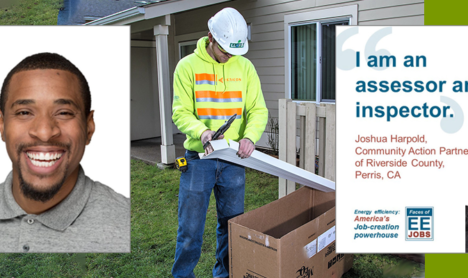
United We Work: Together, a Force for Good
by Steve Cowell
The business case for energy efficiency is well-proven. Compelling evidence shows that EE prevents energy waste and lowers costs — in homes, and in commercial, industrial and institutional buildings. EE serves as a “baseload plant,” by reducing overall energy use. It’s reliable and resilient. And energy efficiency is an economic turbocharger. A key aspect of economic benefit is the massive jobs boost from the EE sector. My team is spearheading Faces of EE to introduce energy efficiency’s 2.2 million U.S. workers.
Read More -
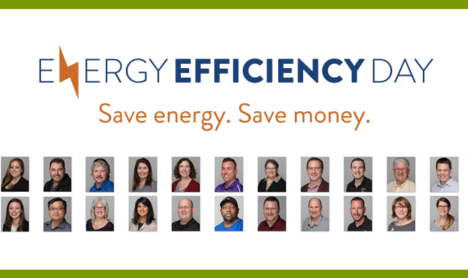
#EEDay2017 is Coming!
by Carol Harley
Are you ready? We hope if you are reading this, you have already signed up for #EEDay2017. October 5 marks the second-annual campaign proclaiming energy efficiency’s powerful benefits. This year, we’re all about jobs and brighter solutions.
Efficiency is the cleanest, fastest, and most cost-effective energy solution. It’s also a job-creation powerhouse. Follow @FacesofEE on Twitter to meet some of the 2.2 million energy pros who work in energy efficiency.
Read More -

Pollinating a Framework for Cost-Effectiveness Testing
by Julie Michals
Bees and pollination have been on my mind lately. Summer months bring the enjoyment of sampling honey at the local farmers’ market, but more importantly, I’ve learned new things about bees from my daughter’s recent robotics team project — specifically, how much bees matter to humans and how their vitality is at issue.* As I observe bees moving from plant to plant in my garden, their process reminds me of the pollination we humans practice with sharing information. I’ve been in the thick of such a process for a few months, spreading the word about the recently published National Standard Practice Manual (NSPM).
Read More -

Revealing the Faces of America’s Energy Efficiency Professionals
by Pat Stanton
I am eager to tell you about a new initiative, “Faces of EE,” that highlights energy efficiency professionals. Join us to help reveal the unsung heroes of a largely invisible workforce. Our aim is to bring a well-documented message to policymakers and the public: Strong, non-partisan energy efficiency policies can expand a vital workforce in every community nationwide. Together we can keep building positive momentum for jobs that capture superb ROI.
-

A New Lens for Assessing Cost-Effectiveness
by Julie Michals
The issue of determining the cost-effectiveness of energy efficiency resources has long been a complicated and sometimes contentious topic. Despite the perception that virtually all states nominally use some version of the tests identified decades ago by California, actual practice has been inconsistent and often subject to debate.
Read More -
Spotlight: Bright Ideas Gain Receptive Audience in DC
 by Gabe Epstein
by Gabe EpsteinThe Friday of Independence Day weekend I had the pleasure of educating D.C. lawmakers on a few of E4TheFuture’s initiatives. I mean, what’s more patriotic than asserting your democratic rights by visiting elected officials to discuss energy efficiency and renewable technology?
-

Clean Energy in Today’s Political Climate: Businesses Double Down
by Rachel Ehrman
The mood in the room was one of fierce determination.
“It’s not a matter of politics…it’s about economics and humanity,” Mindy Lubber’s opening remarks drew a standing ovation from 600+ Ceres Conference attendees – from Fortune 500 companies and investors to U.S. non-profit organizations. As I rose from my seat in the room, I knew it was clear that I was among
Read More -
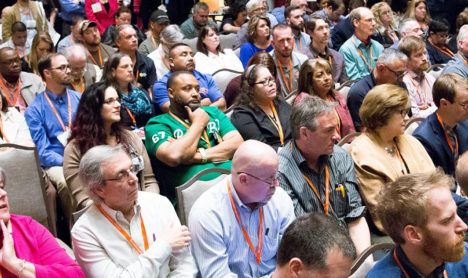
Healthy Housing – an Emerging Field in Home Performance
by Julie Michals
People flocked to healthy homes sessions at the Home Performance Coalition’s largest-ever conference last month. Non-energy benefits associated with energy efficiency upgrades have long been discussed, but this was the first time an HPC conference track was devoted exclusively to healthy housing and indoor air quality (IAQ).
-

Three Reasons You Should Sign a Letter to Save EE Funding
by Steve Cowell
I am passionate about energy efficiency because I’ve seen the results. People’s lives improve on so many levels, when they attend to their homes and buildings. And energy efficiency’s momentum has risen dramatically over the past couple of years. It’s good for both economic and personal health.
-
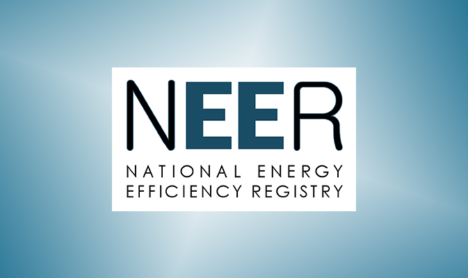
NEER Public Comment Period Begins April 2017
by Audrey Bragg
Energy efficiency is the largest sector in our massive clean energy economy–representing 3/4 of U.S. clean energy jobs. The National Energy Efficiency Registry (NEER) aims to make a good thing even better. Starting this month until May 31st, you can add your voice to the process of crafting this registry so that it works best for all people and purposes.
-

Maryland’s Attempt to Address Dirty Energy Imports
by Susan Buchan
Maryland House Bill 1282 was a long shot. It would have provided the basis for Maryland’s PUC to address one of the most under-reported and elusive issues facing states concerned about climate: emissions from dirty, imported energy. The bill sought to “require the Public Service Commission to study and make recommendations about establishing a program to address carbon pollution attributed to electricity generated out-of-state but consumed within the State.”
Read More -
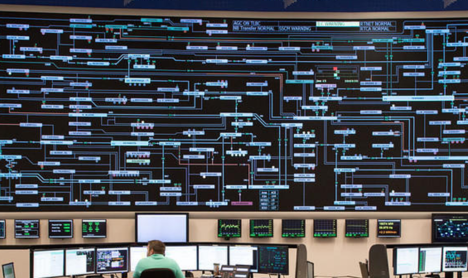
Energy Efficiency Succeeds in the ISO-NE Forward Capacity Market
by Pat Stanton
This month, the Independent System Operator of New England (ISO-NE) completed its eleventh Forward Capacity Auction (FCA 11). The auction enabled procurement of sufficient resources to meet electricity demand in 2020-2021. A total of 640 megawatts (MW) of new energy efficiency (EE) and demand-reduction (DR) measures cleared – an amount ISO-NE describes in its news release as “the equivalent of a large power plant.” Clean renewable generation will also be delivering new capacity in FCA 11, with wind providing 137 MW and solar 66 MW.
-

Bringing Energy Efficiency to the Table in Wholesale Markets
by Pat Stanton
For the first time, the Federal Energy Regulation Commission (FERC) has proposed a definition of Distributed Energy Resources (DER), a key component of the rapidly evolving electric grid. While identifying several resources as DERs including electric storage and electric vehicles, FERC neglected to name energy efficiency (EE) in its rulemaking notice.
Read More -
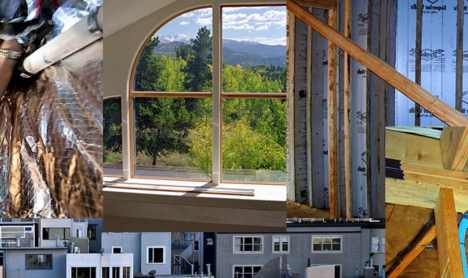
Can Energy Efficiency and Health Industries Bring Momentum Mainstream?
by Julie Michals
When E4TheFuture decided to explore the health co-benefits of energy efficiency in its November 2016 white paper Occupant Health Benefits of Residential Energy, we had a particular reason for doing so. Our initial focus was to document studies that could help inform cost-effectiveness screening—specifically, to help make the case that important health co-benefits of efficiency exist, and their value is not $0. We were excited to piggyback on a broader research effort undertaken by the US DOE.
-
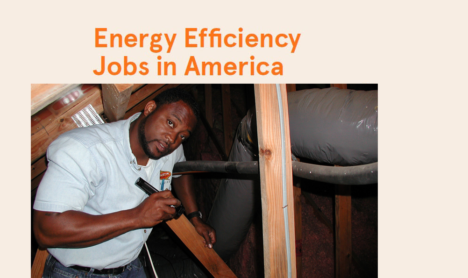
Energy Efficiency Jobs Matter to U.S.
by Steve Cowell
In 2016 we learned that energy efficiency is even more powerful than we thought. Beyond its use as a proven wise investment for cutting waste and saving dollars, the industry supports 1.9 million U.S. jobs—by far the largest sector in the U.S. clean energy economy. Our new report articulates the scale and scope of these jobs.
-
Spotlight: What’s a “Nanogrid”? Clark University Hosts a Tour
 by Emily Duff
by Emily DuffIn mid-December, E4TheFuture staff braved the New England winter to tour an electric generation project at Clark University in Worcester, MA. The nickname “nanogrid” arose because the setup is smaller than a typical microgrid. Professor Chuck Agosta conceived of the on-campus project and is leading its development and ongoing evolution. We were all eager to learn about this nanogrid. (Plus, I welcomed the chance to get away from my desk!)
After arriving at the physics building for introductions, the group headed to the roof to see the technologies that comprise the project’s electric generation. Eight solar panels, two small wind turbines and two storage batteries (located downstairs) simultaneously power the lab and will soon provide clean energy to more rooms in the building.
Left to right: Emily Duff, Susan Buchan, Santiago Deambrosi, Prof. Chuck Agosta and Amir Abedini
-
Spotlight: Networking: An E4Fellow Perspective
 By Josh Kriesberg
By Josh KriesbergI attended my first networking event just one week after starting as an E4Fellow. The organization finds and creates networking opportunities not just for the fellows, but for the entire staff. So much of the work that we do is collaborative and we all relish the ability to meet and connect.
Networking can be difficult. E4TheFuture is great at providing access to events and at building the skills and professional awareness that it takes to be a better networker. The mentality here emphasizes the concept of sharing ideas, both with those who are aligned with our mission and those who have a different view.
Josh (at left) enjoyed the annual NECA holiday networking event with other clean energy young professionals.
-
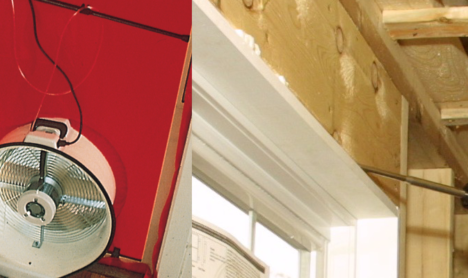
Energy Efficiency is Essential to Achieving NY Clean Energy Goals
by Rachel Ehrman
The Clean Energy Standard (CES) is an exciting step forward for New York to achieve ambitious clean energy goals. The mandate, adopted by the state’s Public Service Commission (PSC) in August, requires 50 percent of New York’s electricity to come from renewable energy sources by 2030. An aggressive phase-in will occur over several years.
Read More -

#EEDay2016: Why Start Now?
by Carol Harley
October 5 marks a national milestone: the big inaugural campaign proclaiming energy efficiency’s powerful benefits. Why now? Energy efficiency (EE) fans and advocates may think you’ve heard it all before: “Saving energy saves money”, “The most efficient megawatts are the ones not used”, “Efficiency helps businesses thrive”. Beyond slogans, campaign organizers seek to convey the massive magnitude EE now delivers. So join us to celebrate EE’s good news and to lift the veil on EE’s power.
-

Health Benefits of Residential Energy Efficiency
by Julie Michals
E4TheFuture recently commissioned Tohn Environmental Strategies to perform a review and analysis of recent literature documenting residential building energy efficiency-related health impacts. Ellen Tohn’s research team* surveyed 25 studies that relate specifically to energy efficiency (EE) improvements. We will soon share these detailed results.
-
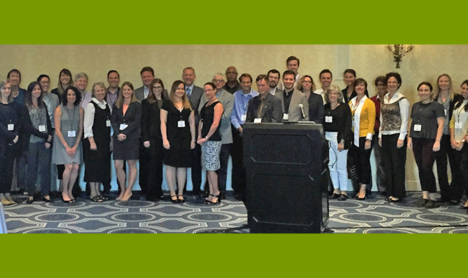
National Energy Efficiency Registry Gains Momentum
by Pat Stanton
During the past few months I have been energized by the great work happening to create the National Energy Efficiency Registry (NEER). More than 150 experts have been reviewing the NEER’s draft principles and operating rules to be released for public comment in the spring of 2017. You’re invited to learn more and get ready to add your voice!
-
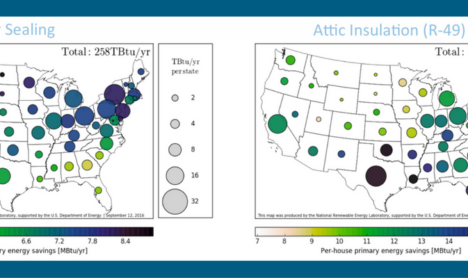
NREL’s ResStock Analysis Takes Large Scale Residential Energy Upgrade Modeling to a New Level
by Susan Buchan
Residential building stock has one unifying trait: it’s different everywhere. Houses vary by climate zone, age, fuel type, construction practices, occupant behavior – just about everything. These variations have long hampered the accuracy of predicting savings for existing homes. With support from the U.S. Department of Energy, researchers at NREL are developing ResStock – a computer model that increases the granularity of analysis for the entire U.S. residential housing stock to an unprecedented level.
Read More -
Spotlight: Josh Kriesberg, Policy Fellow
 Josh Kriesberg began as a policy fellow at E4TheFuture in July 2016 within weeks after completing his B.A. at Syracuse University. His assignments comprise policy initiatives and research projects including the National Energy Efficiency Registry (NEER) and database management.
Josh Kriesberg began as a policy fellow at E4TheFuture in July 2016 within weeks after completing his B.A. at Syracuse University. His assignments comprise policy initiatives and research projects including the National Energy Efficiency Registry (NEER) and database management. -
Spotlight: Emily Duff, Policy Fellow
 Emily Duff began as a policy fellow at E4TheFuture in July 2016. After just a week of training she was soon immersed in a half dozen policy initiatives and research projects including the National Energy Efficiency Registry (NEER). She also assists with social media outreach.
Emily Duff began as a policy fellow at E4TheFuture in July 2016. After just a week of training she was soon immersed in a half dozen policy initiatives and research projects including the National Energy Efficiency Registry (NEER). She also assists with social media outreach.